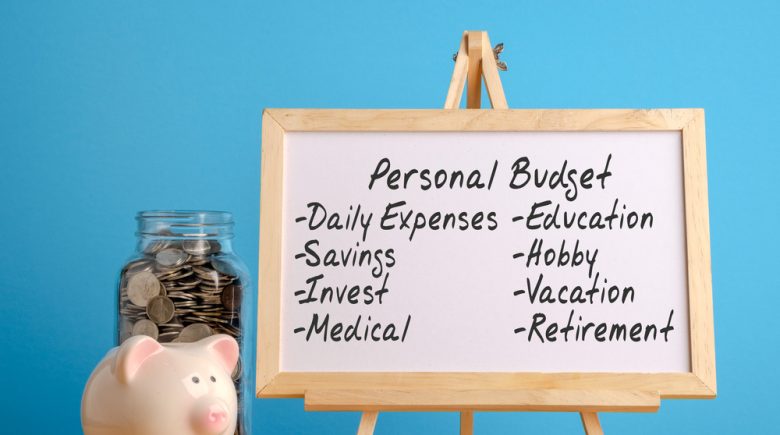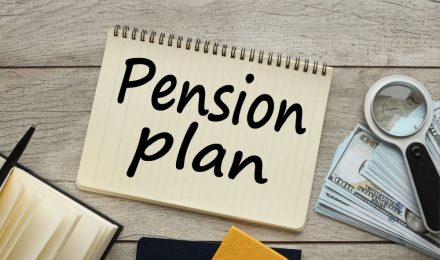We have all heard of companies that are successful such as Microsoft, Apple, and Amazon. We might begin to wonder how these one-time startups made it through the first 5 years without failing. It seems these companies have set themselves apart from others with only moderate or no success. The reason is that Bill Gates, Steve Jobs, and Jeff Bezos know how to budget their company’s income.
It might come as a bit of a surprise to you. Something so simple like a third graders math problem could make a company successful and set it apart from other companies. Did you know, you can set yourself apart in the same way. If you learn how to create a personal budget and you stick to the personal budget you create, you can set yourself apart from others who struggle with money. You can be successful with the money you already make. You might even have some money left over at the end of the month for savings.
Figuring Out Your After Taxes Income
This is the first and by far the most important step in creating a personal budget. You will want to know what you have after taxes to create your budget. That is right. Without knowing exactly what your after-tax income is, you will not be able to figure out a budget plan. So, to figure out what your after-tax income is you will want to add things like your 401(k) contribution and your health insurance contribution. Of course, there might be a side hustle you do. This side hustle usually has expenses such as taxes and fuel, if driving for Uber or Lyft. In order to figure out your after taxes income from the side hustle, you will want to subtract things like the expenses from the side hustle. Now, you have a clear idea of what your total monthly income is. You can move on to step 2 in creating your personal budget.
You Want to Choose a Budgeting Plan
What is a budgeting plan you might ask? Simply put, a budgeting plan is where you sit down and write out all your expected expenses for the month. There will be fixed expenses such as your rent or mortgage payment and there will be expenses that have a fluctuation every month. Your budget plan should include specific things. Some specifics your budget plan should include are all of your needed expenses, some of your wants, and savings account for an emergency. These needs will include food, clothing, shelter, and utilities. You should then fill in the blanks. If your rent or mortgage payment is $1,050, put this figure in the slot next to this expense. Chances are you will not be able to put all of your wants on the budget plan. That is okay, you can add these later as you fulfill a few wants at a time. You should give a good estimate of your utilities. You can look at the year’s prior statements and get an average for this.
Tracking Your Progress
Tracking your progress will not be easy. You will need to utilize Microsft Office Excel or another online budgeting tool. You will want to track your progress for at least 1 month. Tracking your progress will give you a clear idea of what you spend every month. Also, when you track your progress, it gives you a better idea of how you are doing with sticking to your budget plan. So, for instance, when you pay your rent or mortgage during the month of September, you will want to track that you have done so. Also, to keep track of your progress will hold you accountable for your spending. By this, I mean you will be sticking with the budget plan better. You will be able to see your budget plan at work and it will be much easier to stick with the plan if you track your progress on a daily or weekly basis.
Automating Your Savings
This one might seem like common sense. But you would be surprised at how many people do not automate their savings. Then they kill their budget. They are not usually able to hold themselves accountable It might be helpful if you join an online support group for this step in creating your personal budget. That way you can hold yourself accountable for the spending choices you make. It might also be helpful if you send your savings account to a bank that is different from your checking account bank. The reason being is that you will be able to streamline your savings goals with very little effort. There are apps that can help you streamline your savings goals and crush them without thinking too much about it. The number one app for streamlining your savings goals is called digit. There are many who have reviewed this app and it gets the highest ratings of any other app.
You Should Revisit Your Budget When Needed
This final step in creating a personal budget is not going to be easy at first. You need to make it a habit, though, to look at your budget on a daily and, or weekly basis. Doing so will help you stay on track of your budget. Studies have shown that looking at our budget will help us to kill the budget much less often than if we were to create the plan and forget it. For instance, maybe you could only put 1 expensive want on your budget. Maybe, you had a goal to save the money within 6 months. Revisiting the budget will help you reach this goal within 6 months. After you reach the goal of buying that expensive thing you wanted, you can add other wants to the budget. So, you see you cannot just create a personal budget and forget about it. If you do so, you will probably kill your budget often and not get the expensive thing you wanted and pay your housing bill.
We have all heard of companies that are successful such as Microsoft, Apple, and Amazon. We might begin to wonder how these one-time startups made it through the first 5 years without failing. It seems these companies have set themselves apart from others with only moderate or no success. The reason is that Bill Gates, Steve Jobs, and Jeff Bezos know how to budget their company’s income.
It might come as a bit of a surprise to you. Something so simple like a third graders math problem could make a company successful and set it apart from other companies. Did you know, you can set yourself apart in the same way. If you learn how to create a personal budget and you stick to the personal budget you create, you can set yourself apart from others who struggle with money. You can be successful with the money you already make. You might even have some money left over at the end of the month for savings.
Figuring Out Your After Taxes Income
This is the first and by far the most important step in creating a personal budget. You will want to know what you have after taxes to create your budget. That is right. Without knowing exactly what your after-tax income is, you will not be able to figure out a budget plan. So, to figure out what your after-tax income is you will want to add things like your 401(k) contribution and your health insurance contribution. Of course, there might be a side hustle you do. This side hustle usually has expenses such as taxes and fuel, if driving for Uber or Lyft. In order to figure out your after taxes income from the side hustle, you will want to subtract things like the expenses from the side hustle. Now, you have a clear idea of what your total monthly income is. You can move on to step 2 in creating your personal budget.
You Want to Choose a Budgeting Plan
What is a budgeting plan you might ask? Simply put, a budgeting plan is where you sit down and write out all your expected expenses for the month. There will be fixed expenses such as your rent or mortgage payment and there will be expenses that have a fluctuation every month. Your budget plan should include specific things. Some specifics your budget plan should include are all of your needed expenses, some of your wants, and savings account for an emergency. These needs will include food, clothing, shelter, and utilities. You should then fill in the blanks. If your rent or mortgage payment is $1,050, put this figure in the slot next to this expense. Chances are you will not be able to put all of your wants on the budget plan. That is okay, you can add these later as you fulfill a few wants at a time. You should give a good estimate of your utilities. You can look at the year’s prior statements and get an average for this.
Tracking Your Progress
Tracking your progress will not be easy. You will need to utilize Microsft Office Excel or another online budgeting tool. You will want to track your progress for at least 1 month. Tracking your progress will give you a clear idea of what you spend every month. Also, when you track your progress, it gives you a better idea of how you are doing with sticking to your budget plan. So, for instance, when you pay your rent or mortgage during the month of September, you will want to track that you have done so. Also, to keep track of your progress will hold you accountable for your spending. By this, I mean you will be sticking with the budget plan better. You will be able to see your budget plan at work and it will be much easier to stick with the plan if you track your progress on a daily or weekly basis.
Automating Your Savings
This one might seem like common sense. But you would be surprised at how many people do not automate their savings. Then they kill their budget. They are not usually able to hold themselves accountable It might be helpful if you join an online support group for this step in creating your personal budget. That way you can hold yourself accountable for the spending choices you make. It might also be helpful if you send your savings account to a bank that is different from your checking account bank. The reason being is that you will be able to streamline your savings goals with very little effort. There are apps that can help you streamline your savings goals and crush them without thinking too much about it. The number one app for streamlining your savings goals is called digit. There are many who have reviewed this app and it gets the highest ratings of any other app.
You Should Revisit Your Budget When Needed
This final step in creating a personal budget is not going to be easy at first. You need to make it a habit, though, to look at your budget on a daily and, or weekly basis. Doing so will help you stay on track of your budget. Studies have shown that looking at our budget will help us to kill the budget much less often than if we were to create the plan and forget it. For instance, maybe you could only put 1 expensive want on your budget. Maybe, you had a goal to save the money within 6 months. Revisiting the budget will help you reach this goal within 6 months. After you reach the goal of buying that expensive thing you wanted, you can add other wants to the budget. So, you see you cannot just create a personal budget and forget about it. If you do so, you will probably kill your budget often and not get the expensive thing you wanted and pay your housing bill.



